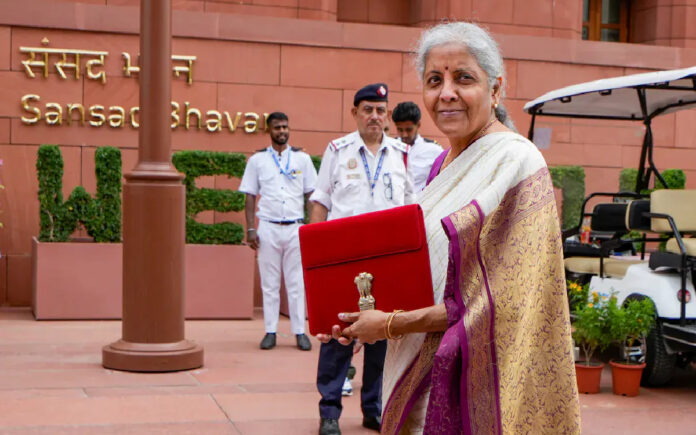New Delhi: The Indian government has announced a reduction in its planned gross market borrowing by 120 billion rupees ($1.44 billion) for the financial year ending March 2025. Finance Minister Nirmala Sitharaman revealed this adjustment in the federal budget on Tuesday. The new gross borrowing target is set at 14.01 trillion rupees, down from the 14.13 trillion rupees announced in the interim budget in February.
In comparison, the government borrowed 15.43 trillion rupees in the previous financial year. Additionally, the government aims to reduce its fiscal deficit to 4.9% of the gross domestic product (GDP), a slight decrease from the 5.1% projected in the interim budget.
Also Read | India Cuts Import Tax on Smartphones, Boosting Apple and Local Market
Why This Matters
Government borrowings significantly influence bond yields, which have declined since the start of this financial year. This year, India’s government finances have gained increased attention as local currency bonds have been included in JPMorgan’s emerging market debt index. Foreign investors have shown keen interest, purchasing $8 billion worth of bonds on a net basis in 2024. Consequently, the outlook on government finances is being closely monitored by offshore investors.
Also Read | Young Protesters Detained in Kampala Amid Crackdown on Corruption Rally
Market Response
Following the announcement, government bond yields experienced a brief dip, with the benchmark 10-year bond yield reaching 6.9260%, the lowest since April 2022. However, yields quickly reversed as the reduction in borrowing was less than many market participants had anticipated. The benchmark bond yield was recorded at 6.9723%, compared to 6.9633% at the previous close.
Notable Quotes
Finance Minister Nirmala Sitharaman stated, “We aim to reach a fiscal deficit below 4.5% next year. From 2026-27 onwards, our endeavor will be to keep the fiscal deficit such that central government debt as a percentage of GDP will be on a declining path.”
VRC Reddy, treasury head at Karur Vysya Bank, commented, “There is some position adjustment as a kneejerk reaction as some investors were expecting a larger cut. Overall, the budget is positive with priority given to fiscal prudence. I expect the benchmark bond yield to ease to 6.90%, with an upside cap of 7.00%.”
Vijay Sharma, senior executive vice president at PNB Gilts, observed, “The long-end yields may see some selling pressure, while short-term yields could ease. Still, the benchmark bond yield is likely to top at 7.02%.”



